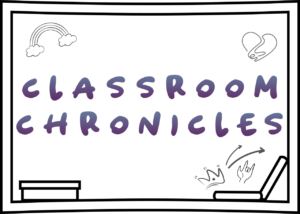In today’s rapidly evolving educational landscape, the importance of diverse student voices cannot be overstated. The classroom is no longer a homogeneous space; it’s a dynamic ecosystem where a multitude of cultures, backgrounds, and experiences converge. This blog post will delve into the significance of embracing and understanding diverse perspectives, exploring the various dimensions of diversity, addressing challenges, and celebrating the power of student voices in shaping the future of education.
1. The Power of Diversity in Education
Imagine a classroom where every student shares similar experiences and perspectives. While this scenario might seem harmonious, it lacks the intellectual richness that diversity brings. Diverse perspectives stimulate critical thinking and broaden horizons. Studies have consistently shown that exposure to different viewpoints enhances problem-solving skills and fosters creativity. By engaging with a kaleidoscope of perspectives, students are better prepared to tackle real-world challenges.
2. Types of Student Diversity
Student diversity is multifaceted, encompassing aspects such as cultural, ethnic, socioeconomic, and linguistic differences. Each type of diversity contributes a unique hue to the educational tapestry. Cultural diversity, for instance, encourages a deeper understanding of global issues, fostering empathy and cross-cultural communication. Embracing linguistic diversity allows students to appreciate the richness of languages and enhances their communication skills.
3. Challenges Faced by Students from Diverse Backgrounds
Despite the benefits, students from diverse backgrounds often encounter challenges. Cultural adjustment, language barriers, and a lack of representation can hinder their educational journey. For example, international students might struggle initially with a new language and cultural norms. Addressing these challenges requires proactive efforts from educators and institutions to create an inclusive and supportive environment.
4. Fostering Inclusivity and Empathy
Educators play a pivotal role in cultivating inclusivity and empathy within the classroom. Strategies such as diverse curriculum representation, inclusive teaching materials, and respectful language choices can create an environment where every student feels valued. Additionally, activities that encourage students to share their unique experiences can foster a sense of belonging and promote empathy.
5. Student-Led Initiatives and Organizations
Across campuses, student-led initiatives and organizations are empowering voices that have been historically marginalized. These groups provide safe spaces for students to express their identities and concerns. Examples include LGBTQ+ alliances, cultural clubs, and social justice organizations. By creating platforms for open dialogue and collaboration, these initiatives contribute to a more inclusive and interconnected campus community.
6. Benefits of Listening to Student Voices
Educational institutions that actively listen to student voices stand to gain significantly. Incorporating student input into decision-making processes can lead to positive changes in policies, curriculum design, and campus culture. Students are often the best advocates for their needs and aspirations, and their insights can guide institutions toward more responsive and effective practices.
7. Promoting Cross-Cultural Dialogue
Meaningful cross-cultural dialogue is essential for bridging gaps between different perspectives. Educators can facilitate discussions that encourage students to share their unique viewpoints and engage in respectful debates. By nurturing an environment where differences are celebrated and acknowledged, students learn to communicate effectively across cultural boundaries.
8. Success Stories: Personal Experiences of Students
Real stories from students who have embraced their diverse identities and backgrounds serve as powerful testimonials. These narratives illustrate the transformative impact of embracing one’s identity and engaging with diverse perspectives. They inspire others to do the same, fostering a sense of pride and confidence in one’s unique heritage.
9. Overcoming Bias and Stereotypes
Acknowledging and addressing biases and stereotypes is essential for creating a truly inclusive classroom. Educators and students alike can engage in open conversations about these issues. By recognizing and challenging preconceived notions, individuals can work toward a more equitable and empathetic learning environment.
10. Looking Forward: The Future of Diverse Student Voices
As our world becomes more interconnected, the importance of diverse student voices will only intensify. The future of education will be shaped by the active engagement of students from all backgrounds, as they bring innovative solutions to global challenges. By embracing diverse perspectives today, we are nurturing a generation of leaders who will drive positive change tomorrow.
Conclusion
In the tapestry of education, each student is a thread, contributing a unique color and texture. A classroom that embraces diverse perspectives is a vibrant mosaic of learning, where understanding flourishes, biases are shattered, and empathy thrives. By celebrating the kaleidoscope of student voices, we are paving the way for a brighter, more inclusive educational future.

